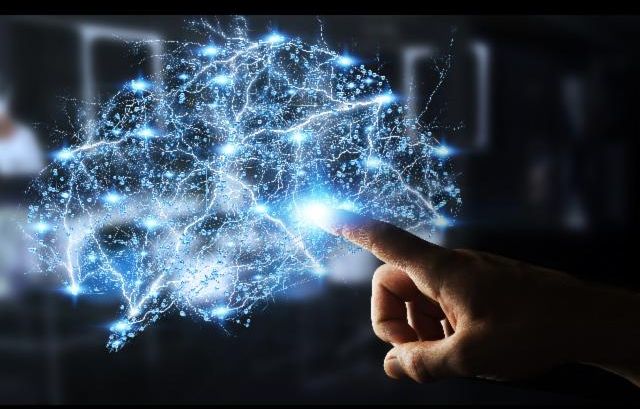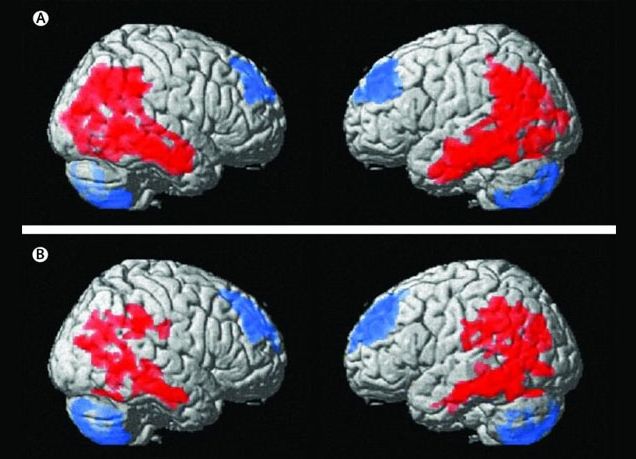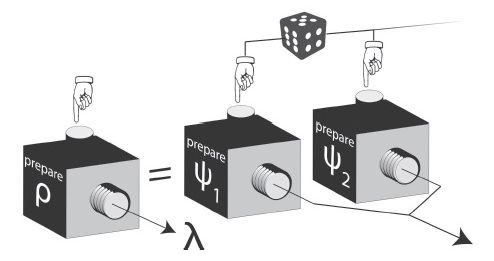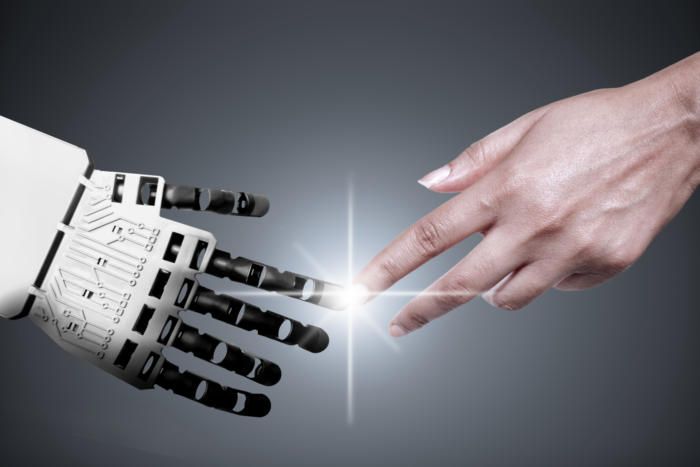What deep learning algorithms can tell us about the visual narratives of the world’s news imagery, from depictions of violence to the importance of people to visual context – a look inside what we see about the world around us.


From digital currency to machine learning, the financial industry is being rocked by exponential technologies. Blockchain, artificial intelligence, big data, robotics, quantum computing, crowdfunding, and computing systems are allowing startups to solve consumer needs in new ways.
The downfall of the world’s largest institutions may not be imminent, but these new technologies are breaking up the previously rock solid foundation of finance, and allowing the fintech world to spring through the cracks. What’s happening now will rewrite the future of finance for years to come. By recognizing this reality and planning for it now, financial professionals can learn to thrive in an increasingly uncertain global economy.

BMI is coming fast and will replace many devices we have today. Advances we making in deep brain development are huge markers that pushes the BMI needle forward for the day when IoT, Security, and big data analytics is a human brain’s and a secured Quantum Infrastructure and people (not servers sitting somewhere) owns and manages their most private of information. I love calling it the age of people empowerment as well as singularity.
Small study in 16 people suggests technique is safe and might help improve mood, anxiety and wellbeing, while increasing weight.
Deep brain stimulation might alter the brain circuits that drive anorexia nervosa symptoms and help improve patients’ mental and physical health, according to a small study published in The Lancet Psychiatry.

(Phys.org)—Physicists are getting a little bit closer to answering one of the oldest and most basic questions of quantum theory: does the quantum state represent reality or just our knowledge of reality?
George C. Knee, a theoretical physicist at the University of Oxford and the University of Warwick, has created an algorithm for designing optimal experiments that could provide the strongest evidence yet that the quantum state is an ontic state (a state of reality) and not an epistemic state (a state of knowledge). Knee has published a paper on the new strategy in a recent issue of the New Journal of Physics.
While physicists have debated about the nature of the quantum state since the early days of quantum theory (with, most famously, Bohr being in favor of the ontic interpretation and Einstein arguing for the epistemic one), most modern evidence has supported the view that the quantum state does indeed represent reality.
Interestingly, Seager, who studies bio signatures in exoplanet atmospheres, has suggested that two inhabited planets could reasonably turn up during the next decade, based on her modified version of the Drake equation, Space.com notes. Her equation focuses on the search for planets with biosignature gases — gases produced by life that can accumulate in a planet atmosphere to levels that can be detected with remote space telescopes.

NASA will hold a news conference at 1 p.m. EST Wednesday, Feb. 22, to present new findings on exoplanets — planets that orbit stars other than our sun. As of Feb. 21, NASA has discovered and confirmed 3,440 exoplanets.
The briefing participants are Thomas Zurbuchen, associate administrator of the Science Mission Directorate at NASA Headquarters in Washington; Michael Gillon, astronomer at the University of Liege in Belgium; Sean Carey, manager of NASA’s Spitzer Science Center at Caltech/IPAC, Pasadena, California; Nikole Lewis, astronomer at the Space Telescope Science Institute in Baltimore; and Sara Seager, professor of planetary science and physics at Massachusetts Institute of Technology, Cambridge. Details of the findings are embargoed by the journal Nature until 1 p.m.

It wasn’t that long ago that building and training neural networks was strictly for seasoned computer scientists and grad students. That began to change with the release of a number of open-source machine learning frameworks like Theano, Spark ML, Microsoft’s CNTK, and Google’s TensorFlow. Among them, TensorFlow stands out for its powerful, yet accessible, functionality, coupled with the stunning growth of its user base. With this week’s release of TensorFlow 1.0, Google has pushed the frontiers of machine learning further in a number of directions.
TensorFlow isn’t just for neural networks anymore
In an effort to make TensorFlow a more-general machine learning framework, Google has added both built-in Estimator functionality, and support for a number of more traditional machine learning algorithms including K-means, SVM (Support Vector Machines), and Random Forest. While there are certainly other frameworks like SparkML that support those tools, having a solution that can combine them with neural networks makes TensorFlow a great option for hybrid problems.

Cybercrime & Cybersecurity 0 20
There is a reason why they’re not in the private sector developing QC. Noticed all represented no one developing and delivering QC commercially. There is a reason why folks like this become nay sayers as it is hard when you’re not able to deliver and not hireable by the private sector to deliver QC. With such a huge demand for QC experts and in security; you have to wonder why these folks have not been employed in a QC Tech company especially when you see tech grabbing every professor they can to develop QC and especially cyber security. Also, I still never saw any bases or details scientifically for their argument why specifically where and how QC will not block hacking just a bunch of professors throwing out words and high level speculations.
SAN FRANCISCO—Cryptographers said at the RSA Conference Tuesday they’re skeptical that advances in quantum computing and artificial intelligence will profoundly transform computer security.
“I’m skeptical there will be much of an impact,” Ron Rivest, a MIT professor and inventor of several symmetric key encryption algorithms, said early at the annual Cryptographers’ Panel here.
Susan Landau, a professor who specializes in cybersecurity policy and computer science at Worcester Polytechnic Institute, said that while artificial intelligence can be helpful when it comes to processing lots of data effectively, she doesn’t think it will be useful in fingering out series attacks or anomalous situations.

This article does try to highlight what and where we are going with the merge of bio and technology. However, what has been shown to date is all very invasive as Quantum Biology has remained a gap in this development work until recently. Thanks to DARPA and others in the private sector who are working on technologies that leverages Quantum Biology principles to develop new integrated Biosystem technologies; we will see amazing work in cell circuitry and connectivity in areas of bio-security, BMI, prosthetics, immunology, anti-disease, reverse aging, etc.
These might sound like outlandish predictions, but DARPA’s Sanchez said it’s not as crazy as it might have sounded several years ago.
“Advancement of A.I. is making machines more powerful in the way they can understand everything from scientific papers to interpreting them and helping us solve big problems,” said Sanchez. “Another aspect to consider is our society [is] embracing things like wearables that… allow algorithms to analyze our physiology. Great examples of that are being able to monitor your sleep patterns and provide feedback on if you should change the time you go to bed or wake up in the morning.”
Sanchez said we’re at the point where wearables could easily be made to communicate with smart thermostats so heat could be turned up or the AC turned on automatically, depending on the user’s needs.
“This is a propaganda machine. It’s targeting people individually to recruit them to an idea. It’s a level of social engineering that I’ve never seen before. They’re capturing people and then keeping them on an emotional leash and never letting them go,” said professor Jonathan Albright.”
“Albright, an assistant professor and data scientist at Elon University, started digging into fake news sites after Donald Trump was elected president. Through extensive research and interviews with Albright and other key experts in the field, including Samuel Woolley, Head of Research at Oxford University’s Computational Propaganda Project, and Martin Moore, Director of the Centre for the Study of Media, Communication and Power at Kings College, it became clear to Scout that this phenomenon was about much more than just a few fake news stories. It was a piece of a much bigger and darker puzzle — a Weaponized AI Propaganda Machine being used to manipulate our opinions and behavior to advance specific political agendas.”
There’s a new automated propaganda machine driving global politics. How it works and what it will mean for the future of democracy.
Berit Anderson and Brett Horvath illustration by Cody Fitzgerald.

Early probes are one thing, but can we build a continuing presence among the stars, human or robotic? An evolutionary treatment of starflight sees it growing from a steadily expanding presence right here in our Solar System, the kind of infrastructure Alex Tolley examines in the essay below. How we get to a system-wide infrastructure is the challenge, one analyzed by a paper that sees artificial intelligence and 3D printing as key drivers leading to a rapidly expanding space economy. The subject is a natural for Tolley, who is co-author (with Brian McConnell) of A Design for a Reusable Water-Based Spacecraft Known as the Spacecoach (Springer, 2016). An ingenious solution to cheap transportation among the planets, the Spacecoach could readily be part of the equation as we bring assets available off-planet into our economy and deploy them for even deeper explorations. Alex is a lecturer in biology at the University of California, and has been a Centauri Dreams regular for as long as I can remember, one whose insights are often a touchstone for my own thinking.
By Alex Tolley